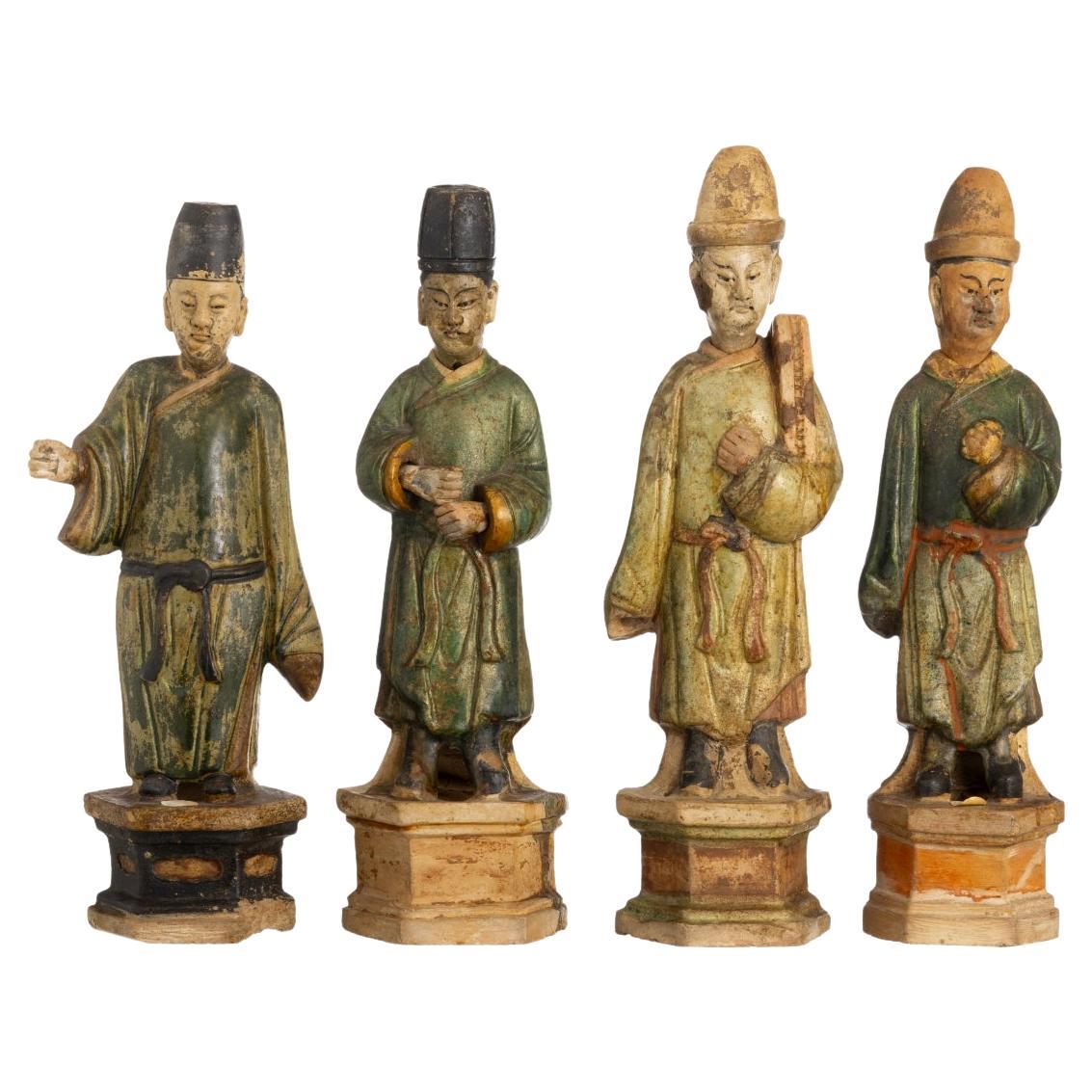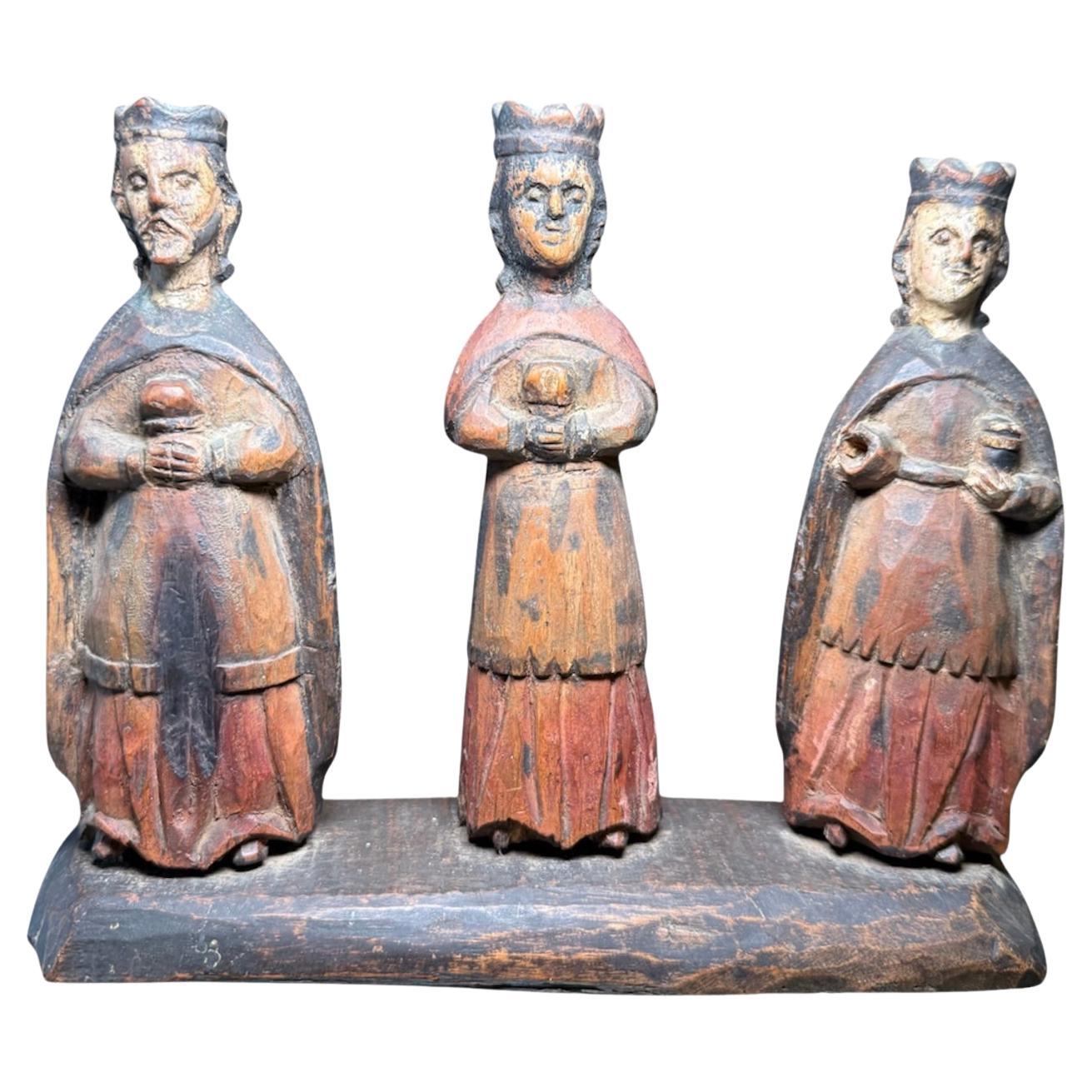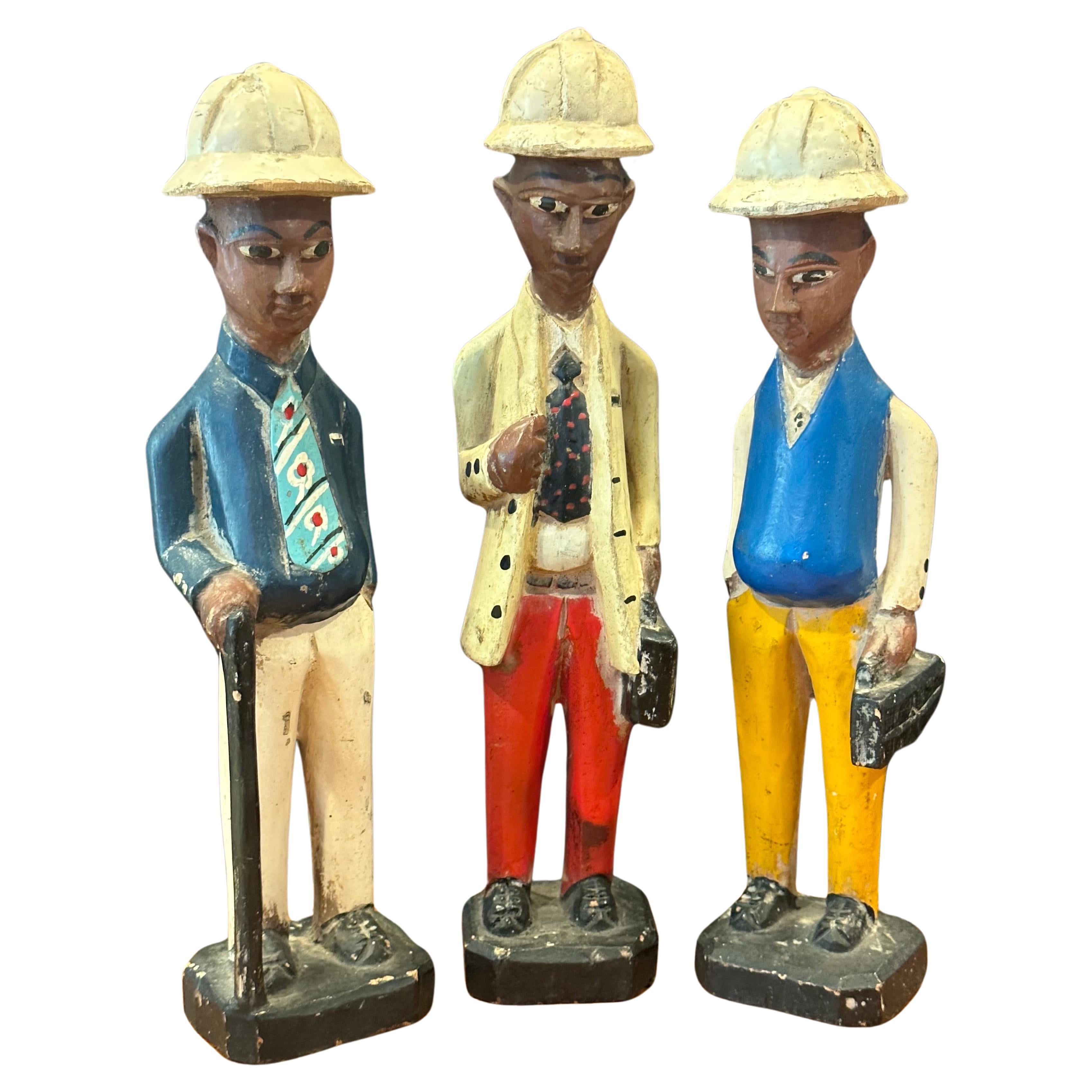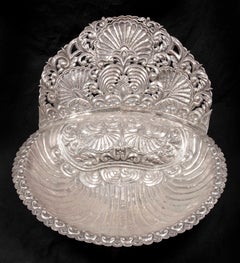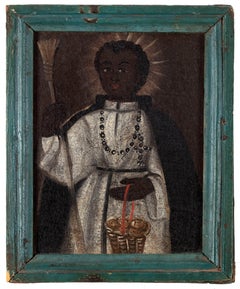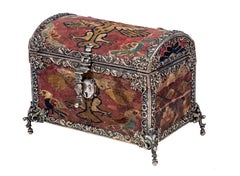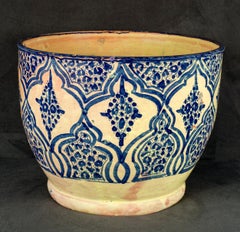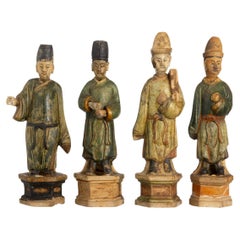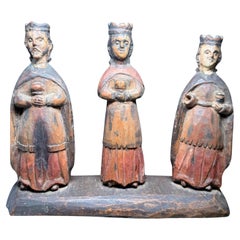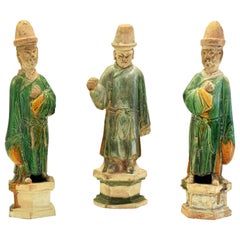Items Similar to The Three Magi
Want more images or videos?
Request additional images or videos from the seller
1 of 5
Peruvian, Ayacucho SchoolThe Three Magica. 1800
ca. 1800
$28,500
£21,594.94
€24,735.26
CA$40,367.04
A$44,049.80
CHF 23,104.87
MX$534,999.51
NOK 288,592.43
SEK 272,734.27
DKK 184,614.62
About the Item
Provenance: Private Collection, Spain.
Known as Peruvian alabaster for its translucency and workability, Piedra de Huamanga is a highly prized material from the province of Ayacucho in Peru. In the 17th and 18th centuries, local craftsman in the town of Huamanga began to specialize in the production of small-scale, polychrome religious sculptures made from this distinctive stone. Huamanga sculptures are among the most accomplished examples of carving from the Spanish Americas, where polychrome wood sculpture was a far more common sculptural medium. These works, which were created as independent sculptures or as sculptural groups—such as our three Magi—were intended for ecclesiastical as well as domestics settings.
Our three figures likely formed part of a larger Nativity group—a New World variant of the tradition of the Neapolitan Crèche. Melchior, Balthasar, and Caspar each carry their gifts of gold, frankincense, and myrrh, as specified in the Gospel of Matthew. But the lands from which they traveled and the animals which brought them to Bethlehem are not identified in the Bible. Here the anonymous artist of our figurines has followed a popular tradition that became current in the Renaissance, in which the eldest of the three kings, Melchior, was thought to be from East Asia; the middle magus, Caspar, from Arabia; and the youngest, Balthasar, from Africa. They travel on appropriate modes of transportation: a horse for Melchior, a camel for Caspar, and an elephant for Balthasar, slow as it might make the journey. The natural warm white color of the stone is retained for the three animals and for the skin of the Magi, save for Balthasar whose face, arms, and hands have been delicately painted. With the exuberantly colored robes and hats worn by the Magi, these figures are charming celebrations of the Feast of the Epiphany.
- Creator:Peruvian, Ayacucho School (Peruvian)
- Creation Year:ca. 1800
- Dimensions:Height: 7.5 in (19.05 cm)Width: 6.5 in (16.51 cm)
- Medium:
- Period:
- Condition:
- Gallery Location:New York, NY
- Reference Number:1stDibs: LU10212238202
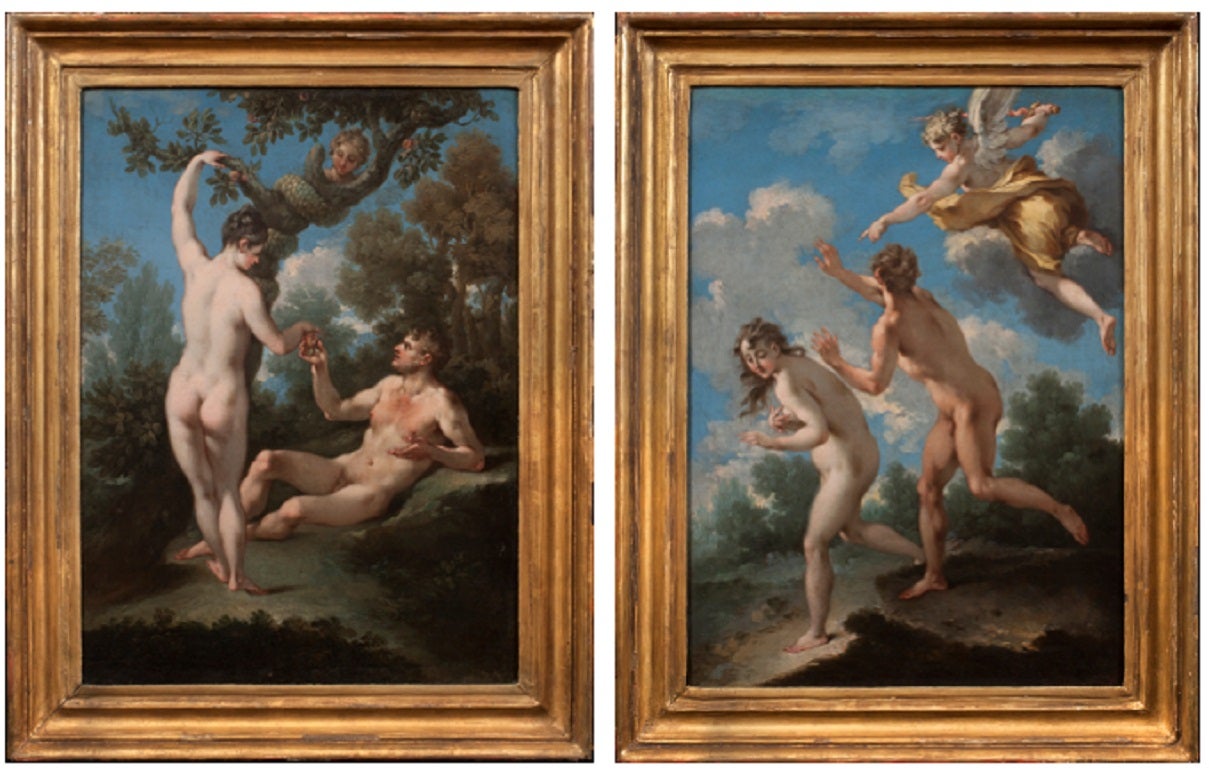
About the Seller
5.0
Recognized Seller
These prestigious sellers are industry leaders and represent the highest echelon for item quality and design.
Established in 1997
1stDibs seller since 2012
22 sales on 1stDibs
- ShippingRetrieving quote...Shipping from: New York, NY
- Return Policy
Authenticity Guarantee
In the unlikely event there’s an issue with an item’s authenticity, contact us within 1 year for a full refund. DetailsMoney-Back Guarantee
If your item is not as described, is damaged in transit, or does not arrive, contact us within 7 days for a full refund. Details24-Hour Cancellation
You have a 24-hour grace period in which to reconsider your purchase, with no questions asked.Vetted Professional Sellers
Our world-class sellers must adhere to strict standards for service and quality, maintaining the integrity of our listings.Price-Match Guarantee
If you find that a seller listed the same item for a lower price elsewhere, we’ll match it.Trusted Global Delivery
Our best-in-class carrier network provides specialized shipping options worldwide, including custom delivery.More From This Seller
View AllCuzco School Baptismal Dish
By Spanish Colonial (Peruvian)
Located in New York, NY
Provenance:
Manuel Ortíz de Zevallos y García, Peru; and by descent in the family to:
Private Collection, New York.
This impressive baptismal dish is an example of eighteenth-cent...
Category
18th Century Old Masters Sculptures
Materials
Silver
Saint Martin de Porres
Located in New York, NY
Provenance: Private Collection, New York, until 2022.
Martín de Porres was born in Lima in 1579, the illegitimate son of a Spanish-American father, J...
Category
Late 18th Century Paintings
Materials
Canvas, Oil
Silver and Transitional Andean Textile Casket
By Spanish Colonial (Peruvian)
Located in New York, NY
Silver was the material of choice for both ecclesiastical and domestic vessels in the New World, not only for its status as a precious metal, but also because of its abundance and du...
Category
Early 18th Century Sculptures
Materials
Silver
Moroccan, Fez or Meknes: Tall bowl (Jobbana) with geometric designs
Located in New York, NY
Provenance:
Collection of Emily Johnston De Forest and Robert Weeks De Forest, New York, by 1911-until 1942; thence by descent until 2018.
Literature: ...
Category
1810s Sculptures
Materials
Earthenware, Tin Glaze
Three Angels
By Domenico Piola the Elder
Located in New York, NY
Provenance:
Robert L. and Bertina Suida Manning, New York, until 1996
Private Collection, USA
One of the leading artists in Genoa during the second half of the seventeenth century, Domenico Piola came from a successful family of artists, renowned for their many illusionistic ceiling programs throughout Genoese churches and palaces. A prolific draughtsman and painter, Domenico oversaw an extremely productive studio. In addition to his collaborations with numerous other artists, Domenico also provided many designs for book illustrations and prints that circulated throughout Europe, earning him international exposure and high acclaim in his own day.
As Dr. Anna Orlando has indicated (written communication), the present work is an early work by Piola, datable from the late 1640s. At this time the young artist came strongly under the influence of Castiglione and Valerio Castello, while admiring the works of Giulio Cesare Procaccini. Piola’s works from this period are exuberant and fluid, and the artist’s love of portraying children is evident from the angels and putti that populate both his altarpieces and more intimate paintings.
The present work depicts three angels...
Category
17th Century Baroque Figurative Paintings
Materials
Canvas, Oil
Portrait of Ni-Polog
Located in New York, NY
Signed, dated, and inscribed on the verso:
Malvina Hoffman/ Den Pasar/ “Nipolog”-/ © 1932/ Bali
Provenance:
The artist; her estate.
Literature:
Mal...
Category
1930s Realist Sculptures
Materials
Terracotta
You May Also Like
Ming Dunasty - Four Procedural Figures
Located in Porto, PT
These remarkable Chinese sculptures, dating from the Ming dynasty, are crafted in glazed terracotta and showcase the exquisite artistry and ceremonial elegance of the period. Each fi...
Category
Antique 15th Century and Earlier Ceramics
Materials
Ceramic
$3,000 Sale Price
50% Off
Puerto Rican Santos De Palo/Wood Carved Sculptures of The Three Wise Men Afoot
Located in Guaynabo, PR
A renowned tradition in Puerto Rico is the making of Santos de Palms by Masters Carvers since the 19th century. They hand carved and painted the saints inspired in their personal rel...
Category
Early 20th Century American Arts and Crafts Figurative Sculptures
Materials
Wood
Three Ancient Terracotta Sculptures, China Ming Period
Located in Roma, IT
This Chinese terracotta group of figures is made up of three figures of Chinese dignitaries in glazed green and ocher terracotta on hexagonal bases and removable heads.
From the d...
Category
Antique 16th Century Chinese Sculptures and Carvings
Materials
Terracotta
Set of Three Hand Carved Figural African Polychromed Colonial Style Sculptures
Located in San Diego, CA
Set of three hand carved figural African polychromed colonial style sculptures, circa 1970s. The set is in good vintage condition and each figure measures approximately 3" W x 3"D x ...
Category
Mid-20th Century African Figurative Sculptures
Materials
Wood
$380 Sale Price / set
20% Off
Set Of Three Indian Folk Art Figures
Located in Asheville, NC
Set of three Indian figures vividly painted. They appear to be kneeling in prayer two have their hair in buns and the third wears a crown. It is likely that the third blue figure is ...
Category
20th Century Indian Folk Art Sculptures
Materials
Wood
$1,800 / set
Les 3 Amis, 1950-55 - ceramic, 30x36x5 cm
By Les Argonautes
Located in Nice, FR
Ceramic from Vallauris
Workshop "Les Argonautes", Vallauris: Isabelle Ferlay (1917-?) And Frédérique Bourguet (1925-1997)
Isabelle Ferlay and Frédérique Bourguet founded their ceramic workshop in Vallauris in 1953, which they named "Les Argonautes", in reference to the famous Greek epic.
Isabelle studied painting at the Fine Arts school of Lyon in 1940, then she attended the Fine Arts in Marseille. Finally, she finished her artistic training in Montpellier, at the Fontcarade national school, where she learned ceramics.
Françoise dit Frédérique Bourguet studied at the Beaux-Arts in Montpellier until 1945 and it was in Sèvres, in Françoise Bizette's studio, that she trained in the art of ceramics. She created her first workshop in Paris in 1945, which she shared with Valentine Schlegel until 1951. The two women ceramicists then practiced
modeling technique. It was in 1953 that she met Isabelle Ferlay and together, they decided to set up a workshop in Vallauris. They produce
shaped pieces, sometimes molded, made of earthenware, enamelled in bright colors. In the 1970s they made stoneware cooked over a wood fire. Some ceramists frequented their workshop, notably the very talented Jacques Innocenti and François Raty.
Category
Mid-20th Century More Art
Materials
Ceramic
More Ways To Browse
Peru Sculpture
Antique Nativities
Three Kings
Antique Creche
Large Nativity
Indoor Tree Sculpture
Jacqueline Picasso Ceramic
Jiang Tie Feng Sculpture
Jimmie Martin
Joseph Ndandarika
Julie Jaler
Kaws Resting
Klein Blue Sculpture
Kurt Weiser
Leonard Baskin Bronze Sculpture
Leonard Baskin Bronze
Lolly Pop
Marshall Fredericks
